57 Adaptations Of A CHRISTMAS CAROL, Ranked
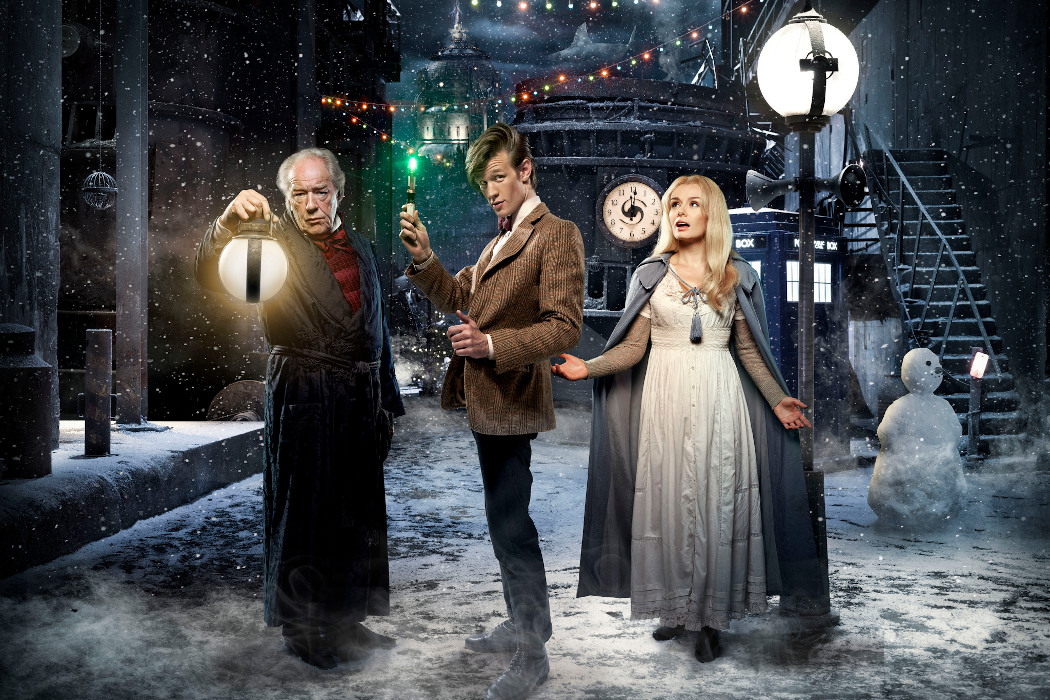
Film critic, Ithaca College graduate, University of St Andrews masters…
Twenty-three movies in, when I was watching Kelsey Grammer faff about with his face in a perpetual old-man scrunch, I considered that maybe every version of A Christmas Carol is terrible. I was quickly proven wrong by — of all things — a 1954 television adaptation of the story. And by Carol no. 43, the 1997 Patrick Stewart version, I had fully atoned. I knew that there are versions of the Charles Dickens tale that don’t make me wish I were boiled alive in my own pudding. I just never wanted to watch another Christmas Carol again.
Dickens’ rather innocuous 1843 anti-capitalist Christian novella wound up being so good as to revive an entire holiday. The Victorian yuletide was wanting for some festive cheer, since the overworked middle-class and displaced poor could not afford to and frankly didn’t care about recognizing the holiday. Virtually nobody celebrated Christmas. With A Christmas Carol, Dickens emphasized feasting, snowfall, and charity, and he even coined the term “merry Christmas.” The book proved to be such a smash hit that nearly overnight, London had embraced the holiday and all of Dickens’ associated ooky-gooky goodness feely-stuffs.
Today, A Christmas Carol stands among the most frequently adapted stories in the history of film and television, ranking alongside Sherlock Holmes, Robin Hood, The Three Musketeers, and Frankenstein. It’s probably the most adapted story in the English language, next to, of course, the Bible.
Hours of my own research placed the count at around 100 adaptations, including films, television specials, one recent FX miniseries, one opera, and one… ahem… adult version from 1975. A more thorough count places the sum at 272, since every TV program between 1960 and 1990 seems to have produced a Christmas Carol episode. (Dickens meets Quantum Leap, anyone?)
Having started in mid-November, I’ve seen 57 of them. And the one I’m most sorry to have missed is A Klingon Christmas Carol, a recording of a Chicago performance from 2012 that was, yes, performed entirely in Klingon. (“Scrooge has no honor, nor any courage,” the website synopsizes. “Can three ghosts help him to become the true warrior he ought to be in time to save Tiny Tim from a horrible fate?”)
Humbug, Interrupted
Like Sherlock Holmes, which saw its first adaptation in 1900 with an under-a-minute-long silent production, Dickens’ work premiered on celluloid in 1901. Scrooge, or, Marley’s Ghost, directed by Walter R. Booth and starring Daniel Smith as Ebenezer Scrooge, tried to cover the entire Christmas Carol story in five minutes and without sound.
Later color and sound adaptations would try (and fail) to tell the same story in two hours. The FX miniseries that debuted this December promised to do it in three. The book itself, for comparison, is only about 90 pages.
Watching 57 versions of A Christmas Carol, spanning from 1901 to 2019, actually wound up producing a rich, fruitcake-like slice of American and British cinema history. The groundbreaking visual effects of that first adaptation would have made Méliès giddy. Angels float around a dark screen during the intertitles. Jacob Marley’s superimposed grill appears on Scrooge’s knocker. The spirit later appears in Scrooge’s bedroom, transparent — you can see the wardrobe through his chest! And rather than transport Scrooge into his past, the old miser’s holidays of yesteryear are projected onto his thick black curtain.
I hope you think that this superimposition and projection tech is neat, because very little changes between 1901 and 1970, when the Oscar-nominated musical Scrooge (starring Albert Finney!) finally gave us a floating Marley, a stagecoach rampaging through Scrooge’s front hall, and ghosts that actually fly Scrooge through the air.
The technology changed on the exhibition end of things, too — the first television specials to tackle the story, from 1938 to the 1950s, are mostly lost. Nobody, as it happens, had the technological capabilities at the time to record live TV specials. Now, even the Hallmark Channel has the budget for a Christmas Carol movie every year or so, and there are so many low-budget amateur productions of the story that it’s hard to keep track of their sum total.
The Cratchit Kids Always Suck
Of all the adaptations of A Christmas Carol, most of them are dreadful. The first mistake is when writers and directors think they know more than Charles Dickens. I read the book concurrently with the first 10 or so movies I screened, and it’s the minor departures or alterations that began to pile up like a thousand nettles prodding at my bollocks.
In several of the films, Scrooge sends the Cratchits a turkey instead of a goose. The 1998 version, set in the Wild West, renames Jacob Marley to Jacob Marlowe. A 2018 update of the story puts Scrooge in charge of a brewery. The 1969 Carol includes a plot thread where Scrooge inhales snuff powder because he has trouble sneezing. The Kelsey Grammer musical features a hot Ghost of Christmas Past who pole-dances on Scrooge’s bedpost. Ah, the Sex Worker of Christmas Past — just as Dickens imagined.
Then, there are the macro changes. The Mr. Magoo adaptation nixes lines at random and puts, God help us all, Christmas Past after Christmas Present. The 2001 animation prominently features two mice that follow Scrooge on his adventures and add nothing to the story. The Tim Curry musical gives him a dog. The Rankin & Bass version introduces a singing insectoid narrator named B.A.H. Humbug.
The 1938 Christmas Carol adds a scene where some kids, including an absolute dullard Bob Cratchit, pelt Scrooge with snowballs. It also opens on a scene of Scrooge’s nephew, Fred, sliding on some ice with Tiny Tim, which feels like it goes on for an hour. In fact, with three whole scenes of the stuff, the entire film has a bizarre fetish for characters sliding on ice.
And among all of them, we have yet to have a perfect adaptation of Dickens’ novella. Some of the versions eke out another 20 minutes after Scrooge changes into a better man, when the story can be resolved in eight. Many of them exclude Tiny Tim, or Bob Cratchit, or Scrooge’s sister, or Scrooge’s old flame, Belle. Some iterations leave out whole ghosts. And in all of them, the Cratchit kids suck. Some of the irritation owes to the children’s lousy, “oy, guv’nah!” performances; some is the fault of the story, which never gives the Cratchit children anything to do. I don’t remember Dickens giving them many lines.
But the most egregious change often comes with animated versions or television specials, like The Smurfs: A Christmas Carol or An All Dogs Christmas Carol — the characters conspire to pretend to be spirits, and in their cosplay they manage to gaslight their grumpy friend into loving Christmas and giving them presents. If there were a moral to these versions of the classic Christmas tale, it wouldn’t be one of charity, goodwill to all men, and the importance of human kindness over financial gain. It’d be “don’t fault the hustle.”
Of the 57 versions I watched — with everything from the Muppets to the Flintstones, from Bill Murray to the Fonz — which one is the all-around best treatment of Dickens’ tale? Which one is the worst? And just how bad is the Matthew McConaughey version, Ghosts of Girlfriends Past?
Many Christmases, Caroled: The Part Where They’re Ranked
Light your streetlamps, heat up your gruel, and pour the brandy on your best Christmas pudding; here are 57 versions of A Christmas Carol, ranked from worst to best:
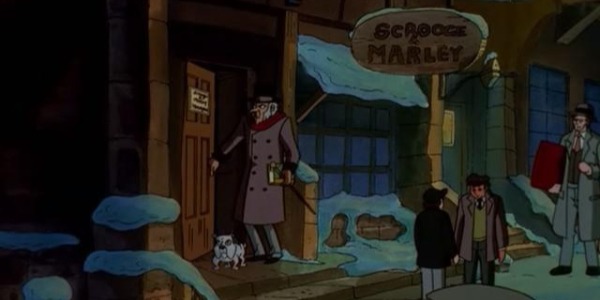
57. A Christmas Carol (1997)
Utter drivel from start to finish. This is an animated musical starring Tim Curry as Scrooge. It gives him a dog. Except Scrooge wouldn’t own a dog — he doesn’t have the tenderness to take care of one, wouldn’t spare the extra expenses, and certainly wouldn’t put up with an animal that, as the film shows happening at least three times, regularly freaks out and tears up his bedsheets. Curry is awful as the miser; most of the time, he just sounds like Tim Curry.
The songs are each worse than the last, and the film overuses “bah, humbug,” turning it into a catchphrase for Scrooge and sapping it of any real meaning. (I looked it up — a “humbug” is a trick or a hoax, and it can’t just be applied to any old thing someone finds distasteful.)
Shoutout to when the Ghost of Christmas Present (Whoopi Goldberg) appears in his living room and says, “I’m sure you’ve never had a guest like me before!” Of course Scrooge hadn’t; the ghost is a black woman in Victorian-era London. Goldberg’s casting could have been used to comment on the role of race and gender in Dickens’ London, but instead it’s clear she was cast for her name with little regard for how a black female Christmas Present should alter the story and the Spirit and Scrooge’s dialogue.
56. A Christmas Carol (2018)
Set in modern-day England — Scrooge is a handsome thirtysomething who runs a brewery, lives in an 1800s manor, and casually owns a sword. The plates on his car read SCROOGE 1. This is all I managed to jot down in my notes before the film pounded my brain into mush and the leftovers dribbled down out my ears.
55. Brer Rabbit’s Christmas Carol (1992)
A definitely racist, abhorrent animation that wastes every minute of its hourlong runtime, redeemed only slightly by a misunderstood alligator who’s also a coded-gay academic type.
54. A Christmas Carol: The Musical (2004)
Alan Menken should be embarrassed at the sheer inanity of his songs here. The poor CG London cityscape is reminiscent of Age of Empires cutscenes, the song-and-dance never rises above passable, and Kelsey Grammer is truly one of the worst Scrooges to ever don the cap and pajamas. Not even Jason Alexander as Marley can redeem his own musically reprehensible sequence, and the whole affair ends on a dumb freezeframe of Scrooge looking like he’s creaming his jeans.
53. Mr. Magoo’s Christmas Carol (1962)
This is one of those specials whose Christmas Carol premise owes to the main character playing Scrooge in an in-world stage play. The near-blind Magoo plays Scrooge, but the movie doesn’t give a whit to honoring its premise besides occasionally cutting to the audience clapping and the curtain falling when it’s time for a commercial break. How does it explain Marley, a transparent spirit appearing in Scrooge’s bedroom? How does it explain the sudden shifts in setting, the extreme close-ups of minute objects, the muttering under the breath? Had director Abe Levitow never seen a play before?
52. Bugs Bunny’s Christmas Carol (1979)
Bugs Bunny dresses up as a ghost and threatens to drag Yosemite Sam to Hell unless he changes his ways. I guess it works, because Yosemite Sam immediately becomes a better person.
51. An American Christmas Carol (1979)
Henry Winkler plays Benedict Slade, and this film’s idea of “Americanizing” the story is giving Slade a bunch of stuff around his factory — Dickens’ story was never about materialism, but that’s all An American Christmas Carol can think about. And Winkler is truly awful as Slade; he has so much makeup caked on that he can’t properly turn his neck, so he moves his entire body whenever he has to look to the side. At one point, Slade remarks, “It took 6 pounds of powder and paint to make that actor look like Frankenstein, that’s what they said in the paper!” At least Boris Karloff made a convincing Frankenstein’s monster.
50. An All Dogs Christmas Carol (1998)
A sequel to All Dogs Go to Heaven that features sexy dogs and a canine Scrooge who has a mind-controlling dog whistle. “Don’t mess with heaven!” one of the dogs says. I wonder if the Pope has seen An All Dogs Christmas Carol.
49. “An Easter Carol” (2001)
Yes, this one is based on Dickens’ A Christmas Carol. It’s a VeggieTales special about an ignorant grey-haired cucumber trying to bulldoze a church to make way for an Easter-themed amusement park until three ghosts visit him and convince him of the error of his ways. We watched VeggieTales in Sunday school when I was 10. The show’s unremittingly dull and, at best, twee and forgettable. This episode has a legion of robotic chickens, so that’s… something. Right?
48. “Ebenezer Sanford” (1975)
Redd Foxx’s show Sanford and Son had a Christmas Carol episode. I accidentally watched the wrong episode first, witnessing Fred Sanford training for the senior Olympics to win back the affections of his girlfriend, Donna — and the whole time, I was thinking, “This is pretty funny and quaint, I wonder how they’re gonna tie A Christmas Carol into this whole thing.” The actual Christmas episode is far, far worse, and there isn’t much funny about it besides a teenager who looks like he’s 35.
47. “Conan’s Christmas Ghosts” (2002)
It’s a sketch from Late Night With Conan O’Brien. If you think The Ghost of Christmas Shark Attacks is funny, then this is the Christmas Carol for you.
46. The Passion of Scrooge (2018)
Few things are worse than bad opera, and The Passion of Scrooge gives us a bad Christmas Carol opera. “Uh, spirit — that’s not a spirit, that’s my bedpost!” baritone William Sharp shouts. “Shouts” being the operative word here, as he does about as much singing in this opera as Rex Harrison does in My Fair Lady. Tack on a cheaply moronic, student film–esque subplot about the composer (Jon Deak) wandering around graveyards, reciting Shakespeare, and feeling sorry for himself, and you’ve got one of the worst Christmas Carol adaptations of recent years. At least the orchestration is nice.
45. A Christmas Carol (1982)
The least imaginative animated Christmas Carol, with its only discerning feature being that Jacob Marley looks like the rejected fifth member of KISS. More interesting than the film is its director, Jean Tych, who worked with Australian animation house Burbank Films on seven Charles Dickens adaptations between 1982 and 1988, including The Pickwick Papers, which nobody ever tries to adapt. Tych had might as well be to Australian Dickens adaptations what Kenneth Branagh is to English Shakespeare.
44. Bah, Humduck! A Looney Tunes Christmas (2006)
Essentially a remake of the much worse Bugs Bunny’s Christmas Carol, with Daffy heading up a megastore and treating his employees poorly. Speedy Gonzalez — the sole Latino Looney Tune — operates the toy assembly line, so that’s kind of messed up.
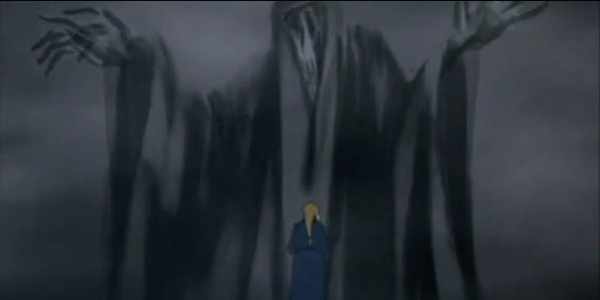
43. Christmas Carol: The Movie (2001)
How could Nicolas Cage as Marley be this boring?! This animation gives Scrooge two mice companions and seems to focus on every other character more than it focuses on Scrooge himself, as though it’d rather be about anyone else. Michael Gambon appears as a rote Christmas Present, though he does much better work in the Scrooge role later down the list.
Most damning are the asinine changes, like Cratchit telling his son, who has whooping cough, “Cough it up, Tim — it might be a gold watch!” Or take the ending, when Scrooge emerges from his long night of the soul but still can’t figure out how to be a better person. The big redeemer here is The Ghost of Christmas Yet to Be, an oily, slick, shadowy phantasm that towers in the black of night over Scrooge. It’s far and away the best version of the spirit committed to film.
42. The Christmas Carol (1949)
Vincent Price narrates this high school–quality production. Literally anything else Price has done is a better use of your time.
41. Rich Little’s Christmas Carol (1978)
A one-joke, one-man HBO show for gifted impressionist Rich Little, who hews off a different celebrity personality for every character. Richard Nixon, with film reels draped over his shoulders instead of chains, plays Marley; Groucho Marx plays Scrooge’s old employer, Fezziwig; and Little’s Christmas Past, Humphrey Bogart, probably got the biggest chortles out of me. But his Scrooge, W.C. Fields, never quite comes together, and there’s too much dead air around every punchline. Maybe the jokes would play better if Fields hadn’t died 32 years before the special was made.
40. Scrooge (1935)
Donald Calthrop plays one of the better Bob Cratchits here — the actor’s like Jonathan Pryce without the erudition. Besides that, Seymour Hicks’ Scrooge has a wicked bedhead and exudes the proper miasma, but camerawork, direction, and effects all can’t be bothered to match the actors’ commitment. This time, Marley is invisible — well, he’s visible only to Scrooge, which is a pretty lazy workaround. You’d expect him to lift up a candlestick or something — anything for a clever visual payoff. But nope. It’s just Hicks doing his best Clint Eastwood, talking to an empty chair.
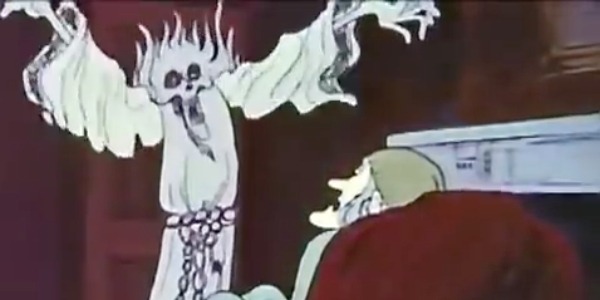
39. A Christmas Carol (1969)
Australian Dickens champion Jean Tych worked on this adaptation as well, which boasts one of the best Marleys on film. This one resembles a Nazgûl, with a spiked phantom crown and shadows crawling all over his ethereal body. On the other hand, Carol ’69 has that subplot where Scrooge keeps inhaling snuff, hoping to sneeze, but he can’t — until he’s reformed, that is, when he lets out the world’s largest “achoo!”
“Bless you!” the entirety of Cratchit’s family cries, and Scrooge says, “Ah, yes. I truly have been.” And that’s it. That’s how the movie ends. It’s so stupid that it’s almost admirable.
38. Ebenezer (1998)
This one’s a made-for-TV Wild West version, with Ebenezer Scrooge being a card cheat, compulsive gambler, and notorious gunfighter. “When I mozied into your saloon, I was filled with the Christmas spirit,” a man tells Scrooge. “Now, I — I don’t have a dang thing left.” Just dreadful television.
37. A Christmas Carol (1923)
Scrooge’s hair and face are so white in this version that it doesn’t even register to the camera; everything above his shoulders is a washed-out blaze. But it’s so short that it hardly matters. And it’s quiet, which is more than I can say for the worse ones.
36. A Christmas Carol (1977)
Truly some of the worst matte paintings I’ve ever seen. The rest of the production approaches high school levels of carelessness and bag wigs. But still, bad matte paintings are better than no matte paintings at all.
35. Ms. Scrooge (1997)
Scrooge is an African-American woman this time, played by Cicely Tyson with a performance that begs the question, “What, is she — is she doing a voice? What is that?” Her name’s Ebenita, too? Piss off.
The spirits, of course, are all white people, and something about their begging Ebenita for help laying their tortured souls to rest doesn’t sit right with me.
34. A Christmas Carol (2000)
Transplanting A Christmas Carol from Victorian London to a 21st-century loan shark’s dingy London apartment building doesn’t make it more interesting. This version is more romance-focused than past adaptations and about five times more boring.
33. The Smurfs: A Christmas Carol (2013)
If the grouchy Smurf doesn’t like Christmas, he should be allowed to not like Christmas! Instead, the other Smurfs drug him and cosplay as ghosts to try and convince him to celebrate the damn holiday like a good Smurf, lest they all be cooked and eaten by Gargamel. Real haunting stuff. Most of the special is hand-drawn 2D animation, though, which really roasts my chestnuts.

32. Nan’s Christmas Carol (2009)
An episode of The Catherine Tate Show wherein Nan (Catherine Tate) is the unwilling Scrooge. David Tennant is the only person of interest here, playing a hip, rock star version of Christmas Present. “They told me you were a nutter,” Nan tells him. “I was lookin’ forward to that.”
31. A Diva’s Christmas Carol (2000)
With effects straight out of Death Becomes Her and plenty of Kathy Griffin to go around (she plays Christmas Past), A Diva’s Christmas Carol is one of the more entertaining adaptations. Griffin’s best line comes after she arrives decked out in a posh white long coat: “Last year, I had to show Tom Ford all of his past Christmases.” The movie still blows candy canes and has a Ringu ending where Vanessa L. Williams gets sucked feet-first into a television, but at least we’re getting somewhere.
30. A Carol for Another Christmas (1964)
The Xerox Corporation spent $4 million in 1960s money for a series of films promoting the peacekeeping efforts of the U.N., and The Twilight Zone’s Rod Serling was commissioned to scribe a Christmas special for them. Actors appeared without compensation, given that the films were more charity work than traditional shoots. In Carol for Another Christmas, the Ghost of Christmas Present (Pat Hingle) shows Daniel Grudge (Sterling Hayden) a concentration camp full of starving prisoners and asks him to compare their suffering to his lavish nightly dinners. So that’s fun. Peter Sellers and Eva Marie Saint also star.
29. Scrooged (1988)
With similar vibes to the Hamlet adaptation starring Ethan Hawke set in the bowels of a tech corporation, Scrooged makes its Ebenezer (played by Bill Murray) a television producer hell-bent on cashing in on a successful Christmas special. Though his scenes with Karen Allen approach a Groundhog Day–esque whimsy, Murray never seems redeemable, or even like he wants redemption. The clusterf*ck final 20 minutes undo all the goodwill the film had built up, setting the narrative ablaze like a conflagrating Christmas tree, and as he goes into his do-gooder schtick at the end of the film, when he sacrifices his career in return for righting his wrongs, the actor looks like he’d rather be anywhere else. Murray delivers his redemption speech with the inebriated aplomb of a drunk community theater actor, sauntering and mumbling all over the production until the whole thing collapses under him into the end credits.
28. A Christmas Carol (1938)
Ebenezer Scrooge (Reginald Owen) is horrifying in this version — his old age makeup looks like some advanced version of The Fly. He’s also monotonously grumpy and never gets a love story. Around him, the supporting cast is all “’ello, guv’nah, pleased ta make yer acquaintance,” like they learned how to do their British accents from Don Cheadle’s character in Ocean’s Eleven. But in a stupid kind of 1930s big-studio Christmas movie kind of way, Carol ’38 is a lot of fun.
27. A Christmas Carol (1914)
Copious amounts of eye shadow and more intertitle cards than I cared to read. It’s a merciful 22 minutes long, but even the worst of these silent shorts is still a fun watch. No dialogue means there’s plenty of hand-waving and goofy pointing — a building block of cinema we seem to have forgotten about.
26. A Christmas Carol (1959)
Basil Rathbone plays Scrooge here in a pretty straightforward hourlong rendition of the tale. Having watched it mere days ago, I’m struggling to remember anything terribly compelling about it, negative or otherwise.
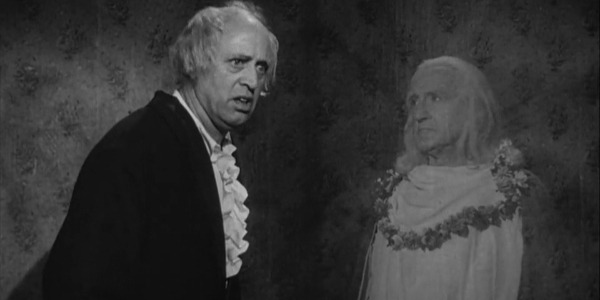
25. A Christmas Carol (1951)
The Alastair Sim version considered by many to be the definitive take on the story. This adaptation takes great pains to explain in precise detail exactly how Scrooge got his wealth, how he started Scrooge & Marley, and what his former beau does in the present day — all completely unnecessary additions that overstuff and overwhelm the childishly simple themes the film ultimately falls on. It takes a lot of chutzpah to set out to make the definitive, be-all, end-all Christmas Carol adaptation and wind up with a slow-paced, dragging drudge.
24. “A Christmas Plotz/ Little Drummer Warners” (1993)
Here it is, the first good version of A Christmas Carol on the list: The Animaniacs take on Dickens. It’s as wonderful (and as slight) as that sounds, but the real jewel is an extended Big Lebowski set piece in a lively musical number from “A Christmas Plotz.”
23. Mickey’s Christmas Carol (1983)
The version my English class watched in sixth grade. Being a Disney cartoon, it’s indelibly cleverly animated, but too many alterations to the story (we never see Scrooge McDuck’s childhood!) make the transformation hard to stomach. Goofy is an all-timer Marley, though.
22. “A Jetson Christmas Carol” (1985)
It’s a better episode of The Jetsons than it is a Dickens adaptation, but I’d rather watch 20 minutes of a wholesome space-age family with quirky galactic-jazz outfits than suffer through the Alastair Sim version again.
21. The Man Who Invented Christmas (2017)
A heavily fictionalized biopic starring man meat Dan Stevens as Charles Dickens as he writes A Christmas Carol. Christopher Plummer takes the Scrooge mantle and, despite the kitschy biopic trappings, shockingly nails the part — his gruff quietude speaks louder than all the buffoonish shouting Bill Murray deferred to. But it’s hard to speak ill of a movie whose big message is “yeah, empathy and charity are great, but also it’d be nice if some people would shut up and not disturb writers trying desperately to make a deadline.” Jonathan Pryce also stars.
20. A Christmas Carol (1984)
George C. Scott can have a little scenery, as a treat. Christmas Yet to Come here still doesn’t speak, but rather emits what sound like whale calls from Hell. It’s all very by-the-books and slickly produced, but Scott and his blobfish-like nose here could have done or said just about anything and I’d have been hooked regardless.
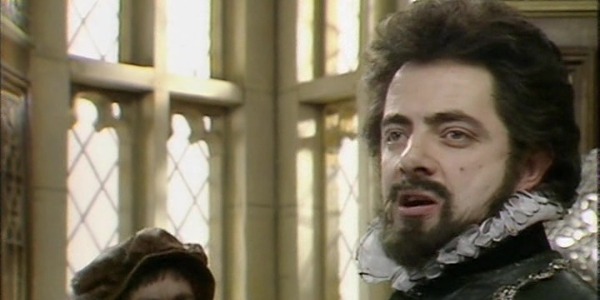
19. Blackadder’s A Christmas Carol (1988)
The best Christmas Carol parody — in which one man (Rowan Atkinson) starts as a kind, compassionate man who, with the help of a visiting ghost (Robbie Coltrane), sees his shitty ancestors and realizes the virtues of being a miserly curmudgeon. Hugh Laurie and Stephen Fry also star.
18. A Christmas Carol (1910)
Regardless of the quality of these silent shorts, they’re mesmeric if you choose the right soundtrack. My go-to accompaniments are the Ghost Story and Carol original scores.
17. Springtime with Roo (2004)
Deliciously wholesome Winnie the Pooh Eastertime entertainment wherein Roo and the Hundred-Acre Wood crew help a selfish, anal-retentive Rabbit to discover the true meaning of Easter. And there’s no mention of Jesus — just colorful eggs. In the best twist of any of these movies, the narrator opts to haunt Rabbit and show him the error of his ways: “Oh dear. This is going to be more difficult than I thought. Well, sometimes a narrator has to do what a narrator has to do.”
16. A Flintstones Christmas Carol (1994)
Everything the Magoo special wishes it was. Fred Flinstone stars as Scrooge in a holiday play, gets too deep into his preparation for the role, and winds up alienating everyone around him. A stomach bug unexpectedly puts most of the cast out of commission, forcing his wife, Wilma, to step in to play the Ghosts of Christmas Past, as well as his old flame, Belle. It doesn’t care much to justify the ghosts, the flying, or the snowballs in the world of the play, but it tries to reform Fred Flintstone simultaneously with Scrooge, and that’s at least worth praise.
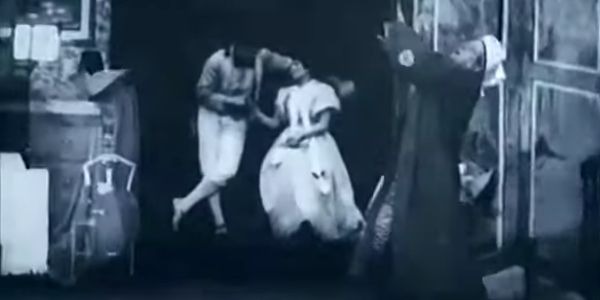
15. Scrooge, or, Marley’s Ghost (1901)
O.G. Christmas Carol. Unfortunately, about two minutes of Scrooge, or, Marley’s Ghost have been lost since its premiere. The movie abruptly ends when The Ghost of Christmas Yet to Come shows Scrooge his own grave. But that just makes it more intriguing — we see the man in transition, and we’re forced to reckon for ourselves whether or not Ebenezer has what it takes to claw his way to salvation.
14. The Stingiest Man in Town (1978)
In 1956, NBC aired a black and white TV adaptation of A Christmas Carol, but as a musical. The telecast was remade later by Rankin & Bass, the duo responsible for all of the classic stop-motion Christmas specials and most of the animated ones, from Rudolph to Frosty. Here, they adapt the entire hourlong NBC TV musical in 51 minutes, keeping as many songs as possible so that it’s almost entirely sung-through.
It’s helmed by a Japanese animation house, from which many animators would go on to form Studio Ghibli. For this reason, The Stingiest Man in Town is often listed as anime. Its songs, though not especially memorable, are quite well-sung by Walter Matthau as Scrooge. There’s also a bit when The Ghost of Christmas Yet to Come takes Scrooge to his grave, where Satan rises out of the Earth to meet him, towering like a skyscraper over the little miser, and the bodies of the dead come forth from the dirt. It’s only when Scrooge shouts his protests that the wind of redemption blows the thousand corpses — and their master — away through the air.
13. A Christmas Carol (2009)
I saw this one after a string of shorts under 40 minutes long, so I was clamoring for a long, meaty rendition of A Christmas Carol. Despite looking like a video game cutscene, Robert Zemeckis’ version is among the best straight-arrow adaptations of the story, and Jim Carrey is easily among my favorite Scrooges. One moment that still sends shivers down my back is when Scrooge, in Christmas Present, stands face to face with Bob Cratchit. And though Scrooge is invisible to him, Bob searches the empty air in front of him, somehow finding Scrooge’s eyes, and you can see all the welled-up desperation and quiet warmth in Bob’s face.
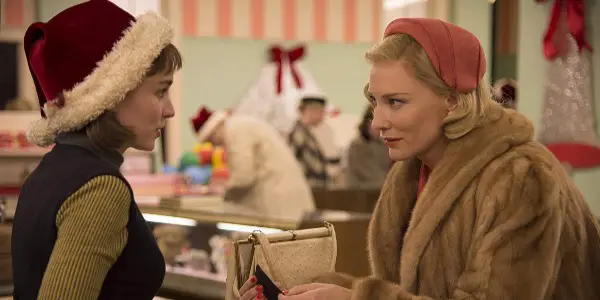
12. Carol (2015)
Okay, so maybe Todd Haynes’ crystalline lesbian drama isn’t a Dickens adaptation, but consider everything else operating in its favor: It’s set during Christmastime, its main character is named Carol, and it’s about the struggle for human decency in a prejudiced world. Plus, it’s a better movie if you interpret it as Kyle Chandler’s Christmas Yet to Come vision of what will transpire if he continues to be a cruddy husband to Cate Blanchett. Unfortunately, however, the non-Dickens-ness of it all excludes Carol from the top 10.
11. Ghosts of Girlfriends Past (2009)
To the surprise of absolutely everyone, the Matthew McConaughey rom-com Ghosts of Girlfriends Past has aged like fine wine. It’s goddamn delightful and has everything any Dickens enthusiast could ask for: Plenty of sex, a killer Jennifer Garner performance, a totally believable redemption arc for McConaughey, and the most suspenseful wine bottle set piece this side of Notorious. It’s got flare gun lines like “Pain beats regret every day of the week and twice on Sunday” and, courtesy of Michael Douglas’ Marley character, “You made your bed. Now you gotta bang whatever crawls into it.” And it ends, as all Christmas films should, with REO Speedwagon, slow-dancing in the snow, and Michael Douglas using ghost logic to try to have sex with a 16-year-old.
Unfortunately, this movie’s about convincing a sex fiend to settle into monogamy and to be less of a dick, not about convincing a selfish miser to embrace empathy and reach out to his fellow man. So it’s also ineligible for the top 10.
10. A Christmas Carol (1954)
Slight as this hourlong TV special may be, it’s immensely palatable. Sure, everyone shouts their lines, and yeah, you can feel the plot being cleared for musical numbers. But I watched Carol ’54 the way it’s best absorbed: half-asleep, lounging on a sofa, wrapped in a warm blanket while a gentle fire purrs nearby. The real treat is watching the YouTube rip. That way, you get the ’50s ads alongside the film, like several transportative holiday spots for Chrysler. Nothing gets you in the Christmas spirit like a well-performed car ad.
9. The Passions of Carol (1975)
A recent cinema studies movement led by grunge-lovers like Nicolas Winding Refn has helped to convert thinking on exploitation and pornographic works that premiered in adult theaters in the 1960s and ‘70s. It’s this lens through which The Passions of Carol is best viewed. If you read A Christmas Carol and thought, “Well, this is all well and jolly, but why doesn’t Scrooge bugger the ghosts?” then this is the version for you. Every lovemaking scene goes on for a few minutes, gets framed in cheery closeups, and is set to a classic Christmas tune, so it’s perfect for drunk holiday parties. I’d call it a porn parody, except writer/director Shaun Costello actually seems to have tried to make a legitimate entry into the Carol canon.
The dialogue is improbably great, too. A favorite of mine is when Christmas Present tells Carol Scrooge, “Well, you bet your buns, honey.” Or when — now, kids, skip to the next paragraph — Marley appears and complains, “There’s nobody that gives good blowjobs in heaven.” The cherry on top is the lead actress’ performance name: Merrie Holiday.
8. A Sesame Street Christmas (1978)
Another pro-gaslighting special, but this one has a cat. This was my 17th watch, and it made me think: “I could be on a date right now, but instead I’m sitting at my kitchen table at 11:00 p.m. drinking alcoholic eggnog and tearing up as Ethel Merman sings ‘Tomorrow’ on the Sesame Street Christmas special and I haven’t been on a date in four years.”
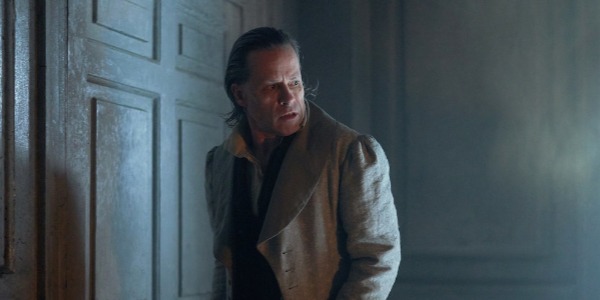
7. A Christmas Carol (2019)
You’ve seen movies tackle the Christmas Carol story in 20 minutes, now marvel as writer Steven Knight and director Nick Murphy do it in 172. It’s like watching a David Blaine underwater escape act where the magician takes as long as humanly possible to make it out. But it scratches that itch I’d been having for 56 movies: I wanted one of these to drill into the lore, to show more of the consequences of Scrooge’s actions, to flesh out the Cratchits as characters, and to confront the possibility that hey, maybe Scrooge doesn’t deserve salvation. And more than that, I wanted a version to do that well.
Guy Pearce is a perfect granite slab in the Scrooge part, even when Knight dials up his cruelty and flagitiousness. He crosses into irredeemable territory, and though Scrooge goes his “I’m a changed man” bit at the end, he knows deep down that he doesn’t deserve his second chance. It’s a dark, dark movie, too, and not just in terms of the grayscale color palette. It begins with piss dripping on dead-as-a-doornail Marley’s face, and every pissing scene and f-bomb thereafter hammers in that TV-MA rating. It’s four minutes shorter in the UK than it is in the US… maybe they cut out the four minutes of Andy Serkis’ Ghost of Christmas Past making fun of Stephen Graham in purgatory.
6. Skinflint: A Country Christmas Carol (1979)
This 1979 country musical adaptation is sung through nearly entirely with country twang, replete with square dances and big Southern parties. It sinks the heavier songs, which retain their carefree folksy lilt, but it makes the show-stopping nine-minute party at Fezziwig’s as great a musical centerpiece as any other Christmas Carol is likely to yield. When the Scrooge stand-in, Cyrus Flint, played by Hoyt Axton, transforms on Christmas morning, he adjusts his bowtie and sings straight to camera, “Hot dang, dilly, it’s a dilly of a day, dilly of a day,/ Dilly as a day can be.” Reader, this song slaps. I showered, got dressed, and ate breakfast that day singing the “Dilly of a Day” diddy to myself. That’s not the only banger from the movie — “Honey in the Hive” and “Stick It in Your Left Ear” might sound like names I just made up on the spot, but I assure you, they’re real, and moreover, they’re outstanding.
It’s imperative to watch Skinflint on its YouTube VHS rip. That way, you get the commercials recorded alongside the film, like a TV spot for the Sean Connery/ Brooke Adams vehicle Cuba.
5. A Christmas Carol (1999)
I’ve applied much consternation as to whether or not the classic Patrick Stewart adaptation, perhaps the one most faithful to the book, deserves to be placed above The Muppets Christmas Carol. But then I remembered that the Patrick Stewart version has only one Marley. That’s a whole Marley less than the Muppets one! And for my money, I want two Marleys, damnit.
But yes, the Patrick Stewart version should really be called the Patrick Stewart and Richard E. Grant version, because that lovable, towering jewel of a man plays Bob Cratchit here. Both men are equally delightful to watch, especially when Grant mourns Tiny Tim and has to hunch over like Gandalf in Bilbo’s foyer just to stand in Tim’s bedroom.
Some of the most clever writing in A Christmas Carol is in the prose: “I don’t mean to say that I know, of my own knowledge, what there is particularly dead about a door-nail. I might have been inclined, myself, to regard a coffin-nail as the deadest piece of ironmongery in the trade.” Those gems are lost in most adaptations of the tale, but Scrooge says that very line himself at the film’s beginning. Plus, Yet to Come here looks an awful lot like Uncle Boonmee, so that’s a leg up in my book.
4. The Muppet Christmas Carol (1992)
Michael Caine was never the best Scrooge. His stern commitment to the role is the best part of this eminently quotable, cozy film, but he’s dancing with the Ghost of Christmas Present by the 50-minute mark, for Christ’s sake. But the Muppets version renders more palpably than any other film the tragedy of Tiny Tim’s demise. Despite its trespasses and alterations, it maintains absolute reverence for the book. And its buildup to the terror of Christmas Yet to Come is probably the most effective of any film, too: “You’re on your own, folks,” narrators Gonzo and Rizzo the Rat say before the last spirit arrives. “We’ll see you at the finale.” Also stars Kermit the Frog and Miss Piggy.
3. “A Christmas Carol” (2010)
Color me purple, the Doctor Who Christmas special didn’t come to play. Michael Gambon is back in full Scrooge mode as the otherworldly miser Elliot Sardick, with the Doctor (Matt Smith) forced to play the part of the Ghost of Christmas Past, Future, and All Matters Timey-Wimey to save his companions (Karen Gillan and Arthur Darvill) from dying in a spaceship crash.
Sure, the writing is sometimes too clever for its own good, and the timeline of the episode isn’t perfect — but no Christmas Carol adaptation nails it, remember? And flying space sharks, cryogenic freezing, and terminally ill opera singers beat Alastair Sim’s crooked teeth any day of the week, and twice on Sunday.
2. Scrooge (1970)
This Academy Award–nominated musical operates in the same vein as Oliver! and My Fair Lady. It’s big, expansive, and probably the last great crack anybody’s going to have at the classic Hollywood musical for quite some time. It’s the Hollywood musical in its death throes, but who better to usher it to its grave than Albert Finney as Scrooge and Alec Guinness as Marley?
And Guinness literally brings us to the grave and then some; this version sends Scrooge to Hell, where Marley greets him and shows him to his new office. And Scrooge watches as a horde of spirits brings his massive chain in to him, and they begin to mummify him with it as he begs for salvation. Is the music bad? Maybe. But the film works such a charm on you that you’ll be humming “Thank You Very Much” to yourself long after the end titles.
That Finney’s Scrooge looks strikingly similar to Donald Trump only deepens the film’s appeal. Watching him confront his past and seek reformation engendered a kernel of wishful thinking in me, the thought that maybe if some ghosts with a noble agenda got to the man, he’d burst out of the White House on Christmas Day with a skip in his step and a song on his lips. Maybe he’d send the biggest goose in the shop to Greta Thunberg. Maybe anyone is capable of change. Or then again, maybe the story’s a fantasy and no one is capable of change.
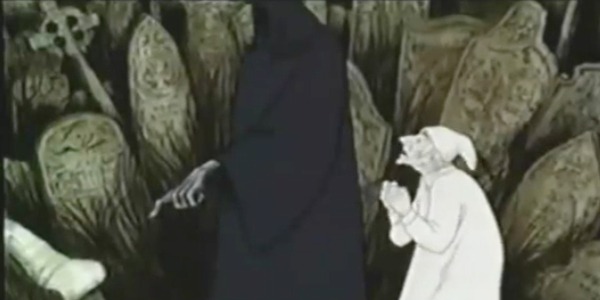
1. A Christmas Carol (1971)
This 1971 Oscar-winning animated short — surprise! — features the voice of the oft-mocked (by me) Alastair Sim as Ebenezer Scrooge. Respectfully yet briskly directed by The Thief and the Cobbler’s Richard Williams and brought to life by Chuck Jones acolyte Ken Harris, Carol ’71 covers most of the story in a dizzying 25 minutes. And Williams and Harris deserve a good wassail, as adaptations can match the splendour of the film’s Christmas Present montage, when Scrooge and the Spirit soar over ashen clouds to a solitary lighthouse, where drunk keepers laugh and sing carols. Then, they’re off to the high seas, where a captain sings that same carol over the chorus of the roiling sea. And finally, we’re back at his nephew Fred’s abode, where his and his company’s mirth and merriment is put into context, where the candle-lit corners of his living room look warmly welcoming after our brief flight over the sea.
Does content like this matter to you?
Become a Member and support film journalism. Unlock access to all of Film Inquiry`s great articles. Join a community of like-minded readers who are passionate about cinema - get access to our private members Network, give back to independent filmmakers, and more.
Film critic, Ithaca College graduate, University of St Andrews masters student, head of the "Paddington 2" fan club.












